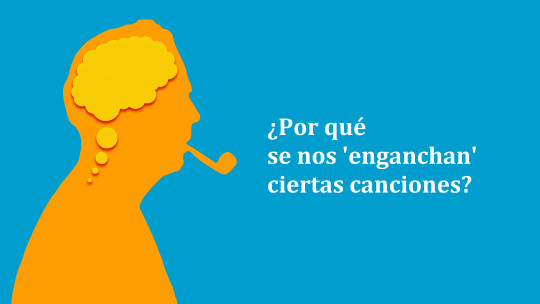
Songs we have to listen to over and over again melodies that we are humming mentally throughout the day, songs that we sing quietly whenever we have the opportunity… if there is a characteristic that defines the potential that music has in our lives, it is that it hooks us, it sticks to us without any kind of of commiseration.
It happens, of course, with many simple and catchy melodies, but even the fruits of the greatest technical virtuosity and the most complex musical pieces are capable of making us think about them all the time. Simply, There are melodies that are practically tattooed in our brain. Why is this happening?
When the music remains it does not leave our heads
Some experts refer to the phenomenon of catchy music as a product of the activity of “earworms” The image of parasites making their nest in our brain and leaving their eggs there is quite unpleasant, but fortunately it is only a metaphor. The idea is that music enters our nervous system through our ears and once there it modifies the way our neurons communicate with each other, creating a dynamic similar to a loop.
In this way, it is enough for an external stimulus to enter our brain at a specific moment (in this case, a melody) for its effects to be perpetuated over time, leaving behind a clear trace: our propensity to reproduce that stimulus over and over again, converted into a memory
How does this happen? The science behind catchy tunes
A few years ago, researchers at Dartmouth College shed some light on the mystery of how our brain can simulate the input of melody to our nervous system over and over again when our ears have already stopped registering this type of stimulus.
An experiment to recognize what happens in the brain
To do this, they carried out an experiment: have a series of volunteers listen to music while their brain is scanned in real time to see which areas of it are activated more than others at each moment.
To that end, participants were first asked to choose a series of songs that are familiar to them and others that they have never heard, so that each person could listen to a personalized list of musical pieces. Once the volunteers had started listening to the music, the researchers included a surprise that had not been explained before: at some points, the music stopped playing for three or four seconds.
In this way, researchers They were able to verify that the part of the brain responsible for processing information related to music is the so-called auditory cortex, and that it continues to be active during those moments in which the music stops whenever it is familiar, while its activity is interrupted when what stops playing is unfamiliar music. In other words, when music plays to us, our brain is in charge of filling in the blanks automatically, without us having to put any effort into it.
A musical echo that we cannot stop
What does the above tell us about that music that we can’t get out of our heads? Firstly, it tells us that the mental processes that we associate with the perception of sensory stimuli can go in the opposite direction to the typical one. That is, it can be produced from the brain in general to areas of the nervous system specialized in processing sound patterns, since it has been proven that our brain can “continue singing on its own.”
Secondly, this shows that External stimuli can leave a trace in our brain which, although we may ignore it at first, remain latent and can cause us to enter a loop, in the same way that stirring the water with a stick can create whirlpools that remain even when we are no longer touching the water.
Neurons that press “play” automatically
If our brain is in charge of reproducing the way in which our neurons in the auditory cortex were activated when we were listening to the music that came through our ears, it will also be able to create the chain reaction that derives from this pattern of activation of several neurons coordinating with each other to process the music… which means that the necessary ingredients are mixed again so that the loop appears again in the future.
To know why the loop originates will require further research, but it most likely has to do with the way in which certain stimuli create (more or less permanent) chemical bonds between neurons.








